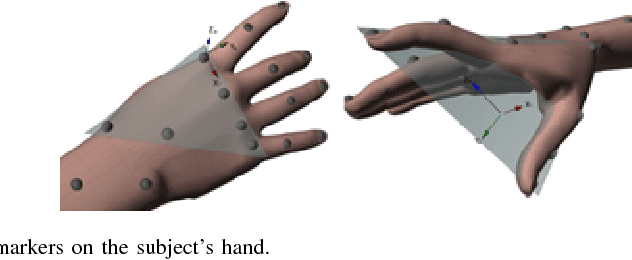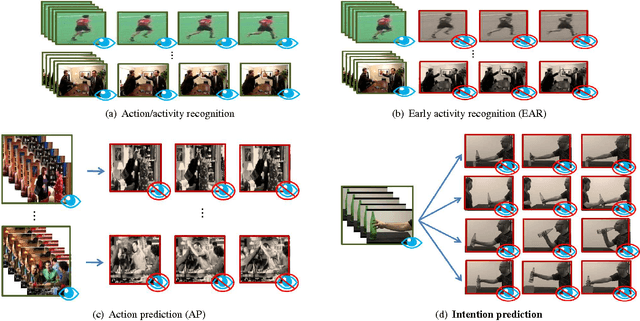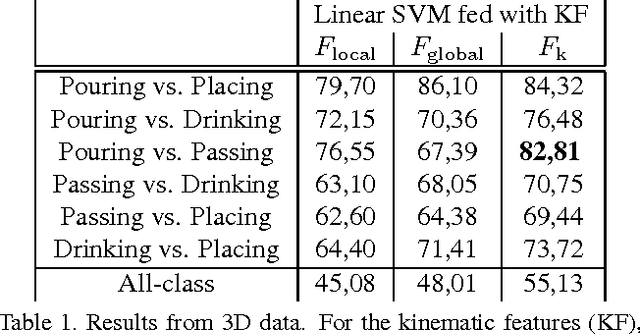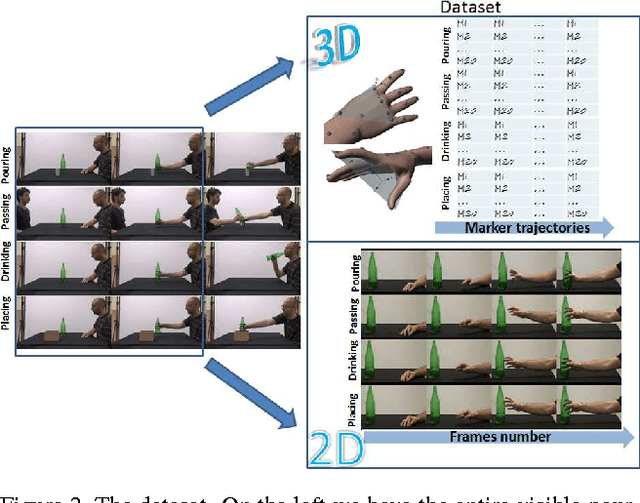Atesh Koul
Predicting Human Intentions from Motion Only: A 2D+3D Fusion Approach
Sep 06, 2017



Abstract:In this paper, we address the new problem of the prediction of human intents. There is neuro-psychological evidence that actions performed by humans are anticipated by peculiar motor acts which are discriminant of the type of action going to be performed afterwards. In other words, an actual intent can be forecast by looking at the kinematics of the immediately preceding movement. To prove it in a computational and quantitative manner, we devise a new experimental setup where, without using contextual information, we predict human intents all originating from the same motor act. We posit the problem as a classification task and we introduce a new multi-modal dataset consisting of a set of motion capture marker 3D data and 2D video sequences, where, by only analysing very similar movements in both training and test phases, we are able to predict the underlying intent, i.e., the future, never observed action. We also present an extensive experimental evaluation as a baseline, customizing state-of-the-art techniques for either 3D and 2D data analysis. Realizing that video processing methods lead to inferior performance but show complementary information with respect to 3D data sequences, we developed a 2D+3D fusion analysis where we achieve better classification accuracies, attesting the superiority of the multimodal approach for the context-free prediction of human intents.
What Will I Do Next? The Intention from Motion Experiment
Aug 03, 2017



Abstract:In computer vision, video-based approaches have been widely explored for the early classification and the prediction of actions or activities. However, it remains unclear whether this modality (as compared to 3D kinematics) can still be reliable for the prediction of human intentions, defined as the overarching goal embedded in an action sequence. Since the same action can be performed with different intentions, this problem is more challenging but yet affordable as proved by quantitative cognitive studies which exploit the 3D kinematics acquired through motion capture systems. In this paper, we bridge cognitive and computer vision studies, by demonstrating the effectiveness of video-based approaches for the prediction of human intentions. Precisely, we propose Intention from Motion, a new paradigm where, without using any contextual information, we consider instantaneous grasping motor acts involving a bottle in order to forecast why the bottle itself has been reached (to pass it or to place in a box, or to pour or to drink the liquid inside). We process only the grasping onsets casting intention prediction as a classification framework. Leveraging on our multimodal acquisition (3D motion capture data and 2D optical videos), we compare the most commonly used 3D descriptors from cognitive studies with state-of-the-art video-based techniques. Since the two analyses achieve an equivalent performance, we demonstrate that computer vision tools are effective in capturing the kinematics and facing the cognitive problem of human intention prediction.
 Add to Chrome
Add to Chrome Add to Firefox
Add to Firefox Add to Edge
Add to Edge